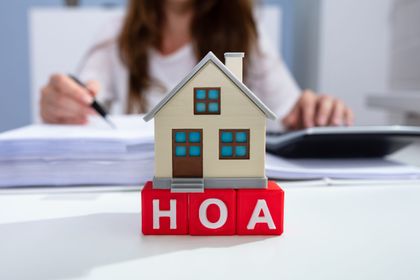
Are you a homeowner or a member of a Homeowners Association (HOA) dealing with financial challenges in your community? Have you ever wondered how to handle expenses that don’t fit into the typical operating budget? This blog post will help you unlock the secrets of HOA reserve funds, which play a crucial role in maintaining financial stability for your community. We will guide you through understanding the importance, purpose, and proper management of reserve funds, as well as how to comply with legal requirements and overcome common challenges. Let’s dive in!
Key Takeaways
- HOA reserve funds provide financial resources to address unexpected costs and maintain the quality of community assets.
- Regular monitoring, adjusting contributions, investment strategies and adhering to legal requirements are essential for effective management of HOA reserve funds.
- Common challenges include underfunded reserves and misuse. Solutions involve regular monitoring, implementing safeguards/oversight measures & complying with state regulations.
Suggested Posts:
HOA Annual Meeting: 10 Tips for Planning a Successful Discussion
HOA Meetings: Unveiling the Essential Rules and Guidelines
Understanding HOA Reserve Funds
Homeowners association reserve funds, often referred to as HOA reserve funds, are essential for the financial stability of any community governed by a Homeowners Association. By setting aside a portion of the monthly fees collected from homeowners, a well-funded reserve account can act as a safety net for non-routine expenses and long-term maintenance projects, such as:
- repairing a community pool
- replacing a clubhouse roof
- repaving roads
- upgrading common area amenities
- addressing unexpected repairs
Having a well-funded reserve account ensures that the community can handle these expenses without burdening homeowners with special assessments or increasing monthly fees.
A healthy reserve fund has several benefits for a community.
- It protects the community from financial hardships
- It helps preserve property values
- It prevents the need for sudden dues increases or special assessments on homeowners
Definition and Purpose
An HOA reserve fund is essentially a savings account managed by the board of directors, specifically allocated for non-routine expenses and long-term maintenance projects. Examples of such expenses include major landscaping projects, building repairs, or replacing aging infrastructure. Proper reserve fund accounting ensures that these funds are used responsibly and effectively.
The primary purpose of reserve funds is to ensure that the community has enough financial resources to address unforeseen costs and maintain the quality of its assets without imposing a financial burden on homeowners. By considering the number of assets in the community and their condition, HOA boards can determine the appropriate amount to set aside in the reserve fund.
Importance for Homeowners and Communities
A well-funded reserve account is vital for maintaining property values, ensuring community well-being, and preventing financial strain on homeowners. To safeguard the community’s financial health, it’s crucial to allocate reserve funds for their intended purpose, avoiding misuse for day-to-day operating expenses or unnecessary projects.
Regular reserve studies help HOA boards assess future expenses and adjust reserve fund contributions accordingly. By adhering to these best practices and legal requirements, the community can avoid:
- Sudden dues increases
- Special assessments
- Homeowner discontent
- Conflicts with the HOA
Operating Fund vs. Reserve Fund

While reserve funds play a key role in addressing non-routine expenses, it’s essential also to understand the role of operating funds, which cover day-to-day expenses and routine maintenance for the community. Both the operating fund and reserve fund receive a portion of the monthly HOA fee, serving different purposes in managing community expenses.
It’s generally recommended that HOAs maintain 1 to 3 months’ worth of operating funds in their account, while reserve funds should be established based on the reserve study results and community needs.
Understanding the distinction between these two types of funds is crucial to ensure the financial health and stability of your community.
Operating Fund’s Role
An HOA’s operating fund is used to cover daily or recurring costs such as maintenance, utilities, and management fees. Homeowner fees provide the necessary funds to support the operating budget, which is typically calculated based on operational expenses over a period of 3-6 months.
The operating fund ensures that the community’s day-to-day expenses are covered, allowing for smooth and efficient management of the community’s assets and services.
Reserve Fund’s Role
Reserve funds, on the other hand, are designated for non-routine repairs, replacements, and unexpected costs. These funds are essential in guaranteeing the financial stability and long-term well-being of the community, allowing it to address unforeseen expenses without causing undue financial stress on homeowners. By having a plan to reserve money, communities can ensure that they are prepared for any unexpected financial challenges that may arise.
By allocating a portion of the monthly fees to the HOA’s reserve fund, HOAs can ensure that they have the necessary resources to cover projected costs in the future, preventing the need for sudden dues increases or special assessments.
Conducting a Reserve Study

One of the most crucial aspects of managing an HOA reserve fund is conducting a reserve study. A reserve study is a comprehensive analysis of the community’s infrastructure and features that helps the association plan for future expenses and maintain property values. By employing the services of an external firm, the HOA can:
- Gain a clear understanding of the amount of funds needed for the reserve account
- Obtain replacement cost projections spanning 20 to 30 years
- Receive a detailed timeline for the maintenance and replacement of major components
Depending on state laws and the type of property, an HOA may be required to conduct a reserve study every two to five years to maintain its validity and ensure adequate funding levels.
Benefits of a Reserve Study
A reserve study offers numerous benefits to HOAs, including:
- A clear picture of the community’s financial needs
- A thorough understanding of future expenses
- The ability to plan and allocate funds accordingly
- Identifying the condition of community assets and estimating future replacement costs
- Helping the HOA board develop a reserve funding plan that meets the community’s needs and complies with legal requirements.
This proactive approach to financial planning enables the association to maintain property values, prevent financial stress, and avoid conflicts between homeowners and the HOA board members.
Steps to Prepare a Reserve Study
Preparing a reserve study involves several key steps, including reviewing relevant documents and records, assessing the condition of community assets, and estimating future replacement costs. An external professional, often a reserve fund specialist, is typically engaged to conduct the study, ensuring an objective and accurate assessment of the community’s needs.
The resulting reserve study can then be used as a basis for:
- Adjusting reserve fund contributions
- Ensuring that the HOA has sufficient funds to cover anticipated expenses
- Maintaining financial stability for the community.
Maintaining Adequate Reserve Funding Levels
Ensuring that your community has adequate reserve funding levels is essential for maintaining long-term financial stability and meeting the needs of the homeowners and the association. This involves determining optimal funding levels based on community needs, reserve study results, and legal requirements, as well as regularly monitoring and adjusting reserve fund contributions to respond to changing circumstances.
By maintaining a well-funded reserve account, your HOA can prevent financial stress, maintain property values, and avoid the need for sudden dues increases or special assessments.
Determining Optimal Funding Levels
To determine the optimal funding level for your HOA reserve fund, it’s essential to consider the community’s specific needs, the results of the reserve study, and any legal requirements that may apply. A well-funded reserve account should ideally be 100% funded, meaning that the association has enough money set aside to cover all anticipated expenses and replacements without imposing a financial burden on homeowners.
By carefully evaluating these factors and establishing a reserve funding plan that meets the community’s needs, your HOA can ensure a stable financial future and protect property values.
Monitoring and Adjusting Contributions
Regularly monitoring and adjusting reserve fund contributions is a critical aspect of maintaining adequate reserve funding levels and ensuring the long-term financial stability of your community. This involves reviewing the reserve fund balance, assessing the adequacy of the reserve fund balance, and adjusting contributions to the reserve fund as deemed necessary.
By staying vigilant and proactive in managing reserve funds, your HOA can effectively respond to changing community needs, maintain property values, and avoid financial stress.
Best Practices for Managing HOA Reserve Funds

To ensure the effective management of your HOA reserve funds, it’s important to implement best practices in allocation, investment, and regular reviews. By following these guidelines, your HOA can maintain financial stability, protect property values, and meet the ongoing needs of the community.
In this section, we’ll explore some of the key best practices for managing reserve funds, including proper allocation and use, investment strategies, and regular reviews and updates.
Proper Allocation and Use
To ensure the proper allocation and use of reserve funds, it’s essential to:
- Designate funds for their intended purpose
- Avoid misuse for operating expenses or unnecessary projects
- Carefully allocate reserve funds for non-routine expenses and long-term maintenance projects
- Maintain financial stability and protect the community’s assets
This includes adhering to legal requirements and state regulations, as well as implementing safeguards and oversight measures to prevent misuse of funds and ensure proper allocation.
Investment Strategies
Investing reserve funds in safe, low-risk options while ensuring liquidity for unexpected expenses is crucial for maintaining financial stability and meeting community needs. Some examples of secure investment options for HOA reserve funds include:
- FDIC-insured accounts
- Bank savings accounts
- Treasury bills
- Certificates of deposit (CDs)
By carefully selecting investment options and considering the safety, liquidity, and yield of each investment, your HOA can effectively manage reserve funds and ensure that they are available when needed.
Regular Reviews and Updates
Conducting regular reviews and updates of reserve fund management practices is essential for maintaining financial stability and adapting to changing community needs. This involves assessing the reserve fund balance, evaluating the adequacy of the reserve fund balance, and adjusting contributions to the reserve fund as necessary.
By staying vigilant and proactive in managing reserve funds, your HOA can effectively respond to changing circumstances, maintain property values, and avoid financial stress.
Legal Requirements and State Regulations
As an HOA, it’s essential to ensure compliance with legal requirements and state regulations for reserve funds. This includes adhering to funding levels and investment restrictions, as well as meeting disclosure and reporting obligations.
By staying informed about the laws and regulations governing reserve funds in your state, your HOA can avoid potential legal issues and maintain financial stability for the community.
Compliance with State Laws
Adhering to state laws and regulations governing reserve fund management is crucial for maintaining financial stability and meeting community needs. This includes:
- Ensuring that reserve funds are funded at the appropriate levels
- Investing reserve funds in accordance with applicable investment restrictions
- Following any other requirements set forth by state laws.
By staying informed about the laws and regulations governing reserve funds in your state, your HOA can effectively manage its finances and ensure the long-term well-being of the community. In this way, the reserve funds protect the interests of homeowners and maintain the value of the properties.
Disclosure and Reporting Obligations
Meeting disclosure and reporting obligations is an important aspect of managing reserve funds, as it helps to keep homeowners informed about the status of the reserve account and the association’s management practices. This includes providing regular budgetary disclosures to members, which typically include reserve disclosure requirements, as well as disclosing information about the reserve account to potential buyers and lenders.
By fulfilling these obligations, your HOA can maintain transparency and trust with homeowners and ensure that the community is well-informed about its financial health.
Common Challenges and Solutions
Despite the importance of reserve funds, HOAs may face challenges related to underfunded reserves and misuse of funds. Addressing these challenges is crucial for maintaining financial stability and protecting property values within the community.
In this section, we will discuss common challenges associated with reserve funds and provide solutions to help overcome these issues.
Underfunded Reserves
Underfunded reserves can cause significant financial stress for a community and may result in sudden dues increases or special assessments on homeowners. To address this issue, it’s essential to regularly review the reserve fund balance, assess the adequacy of the reserve fund balance, and adjust reserve contributions as necessary.
By identifying and addressing underfunded reserves, your HOA can maintain financial stability, protect property values, and prevent financial hardships for homeowners.
Misuse of Reserve Funds
Misuse of reserve funds can result from a lack of oversight or accountability, as well as a lack of understanding about the correct utilization of reserve funds. To prevent misuse and ensure proper allocation, it’s important to implement safeguards and oversight measures, such as clearly defining the intended purpose of reserve funds and monitoring their use.
By implementing these measures and staying vigilant in managing reserve funds, your HOA can avoid financial stress and ensure the long-term well-being of the community.
Summary
In conclusion, managing HOA reserve funds effectively is crucial for maintaining financial stability, protecting property values, and ensuring the long-term well-being of your community. By understanding the importance and purpose of reserve funds, conducting regular reserve studies, maintaining adequate funding levels, implementing best practices, and complying with legal requirements, your HOA can successfully navigate the challenges associated with reserve fund management. Remember, a well-funded reserve account is the key to a financially stable and thriving community.
Frequently Asked Questions
How much should you have in a reserve fund?
It is recommended to maintain a reserve fund of 70% or higher of the property’s calculated deterioration in order to ensure adequate protection.
What does a 70% funded reserve mean?
A 70% funded reserve means your HOA Reserve Fund is considered strong, as anything over 70% is generally accepted as sufficient. On the contrary, an HOA Reserve Fund that is less than 30% funded is considered extremely weak.
What are reserve funds used for?
Reserve Funds are permanent savings set aside to cover the final year of indebtedness, usually amounting to at least one year of debt service.
These funds are typically used to pay off the remaining balance of a loan or other debt obligation. They can also be used to cover any other costs associated with the debt, such as legal fees or other expenses. Reserve funds are an asset class.
How do you calculate reserve funds?
To calculate Reserve Funds, one should calculate the Average Annual Debt Service (AADS), which is the total remaining unpaid principal and interest divided by the remaining number of years.
What is the primary purpose of an HOA reserve fund?
The primary purpose of an HOA reserve fund is to provide financial stability for the community by covering non-routine expenses and long-term maintenance projects.
These expenses can include major repairs to common areas, such as the roof or parking lot, as well as landscaping and other aesthetic improvements. The fund can also be used to cover the cost of unexpected repairs or replacements, such as a broken glass.
Upgrade Your Building Security
Get in touch with a Swiftlane specialist for more information on the best access control and video intercom solution for your building.




